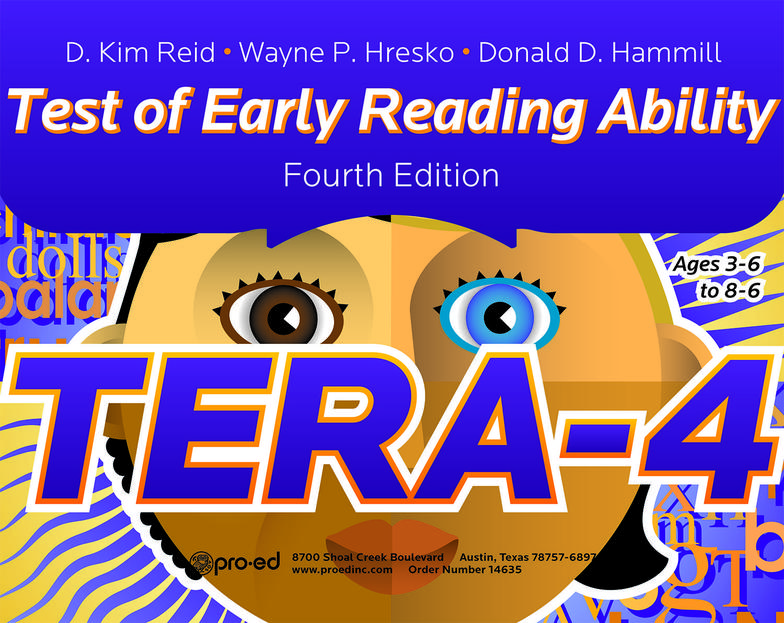D. Kim Reid / Wayne P. Hresko / Donald D. Hammill
Ages: 4-0 through 8-11 years
Administration: Individual; 30 minutes
The Test of Early Reading Ability–Fourth Edition (TERA-4) is a direct measure of reading ability in children ages 4-0 through 8-11. Rather than assessing children’s “readiness” for reading, the TERA-4 assesses their mastery of early-developing reading skills. The test has three subtests: Alphabet (measures knowledge of the alphabet and its uses), Conventions (measures knowledge of the conventions of print), and Meaning (measures comprehension of print). A composite, called the General Reading Index, represents overall reading ability.
TERA-4’s psychometric qualities: Demographics: The TERA-4 was standardized on a representative sample of 1,025 children representing 29 states and 271 different zip codes.
Reliability: Extensive studies of test reliability (coefficient alpha, test-retest, immediate and delayed alternate forms, and interscorer) support the TERA-4’s use with individual students. Average coefficient alphas for the full normative sample range from .88 to .97 for subtests and is .98 for the composite.
Validity: Content-description validity was established through careful selection of items, controlled vocabulary, construct review by a panel of language experts, conventional item analysis, as well as analysis of the test floors, ceilings, and item gradients, and differential item functioning. Criterion-prediction validity was established by (a) correlating TERA-4 standard scores with commercially available measures of reading ability (i.e., ERA, TOSWRF-2, TOSCRF-2, and TOSREC), (b) comparing means and standard deviations between TERA-4 and criterion tests, and (c) computing sensitivity, specificity, and ROC/AUC statistic.
Construct-identification validity was established by studying (a) the relationship of the TERA-4 standardized scores with age, academic achievement, spoken language, and intelligence; (b) the ability of the TERA-4’s standard scores to differentiate groups with known reading problems from those without such problems; and (c) the factorial fit of the subtests to the construct in the test model (i.e., reading). Floors, ceilings, and item gradient analyses for the TERA-4’s subtests and composite were conducted.
Limiting bias: The TERA-4 was examined using differential item functioning techniques. Further, a wide range of both mainstream and minority populations, including gender, racial, ethnic, linguistic, and disability categories, was included in the normative sample. Finally, reliability and validity information is provided for different mainstream and minority subgroups.
(TERA-4) Test of Early Reading Ability
Fourth Edition
The TERA-4 Complete Kit includes:
• Examiner’s Manual
• 2 Picture Books (Form A and Form B)
• 2 Packets of 25 Profile/Examiner Record Forms (Form A and Form B)
• Reader
• Sturdy Storage Box



